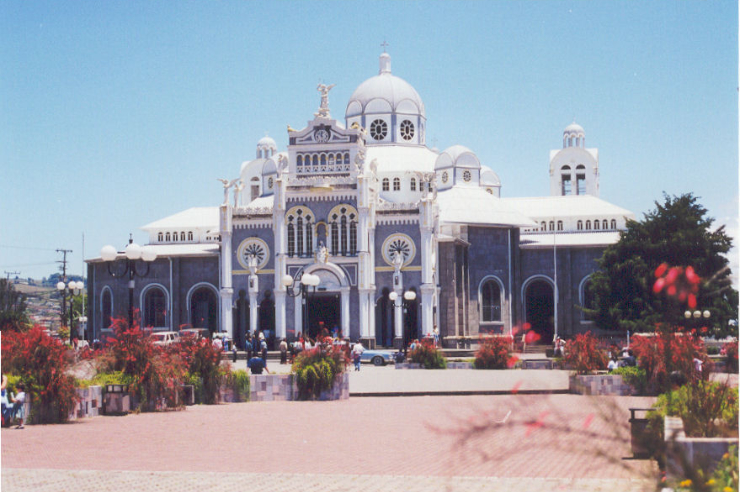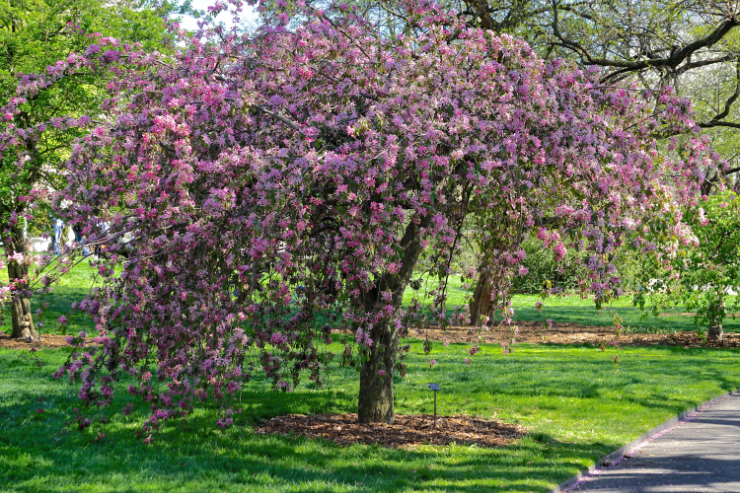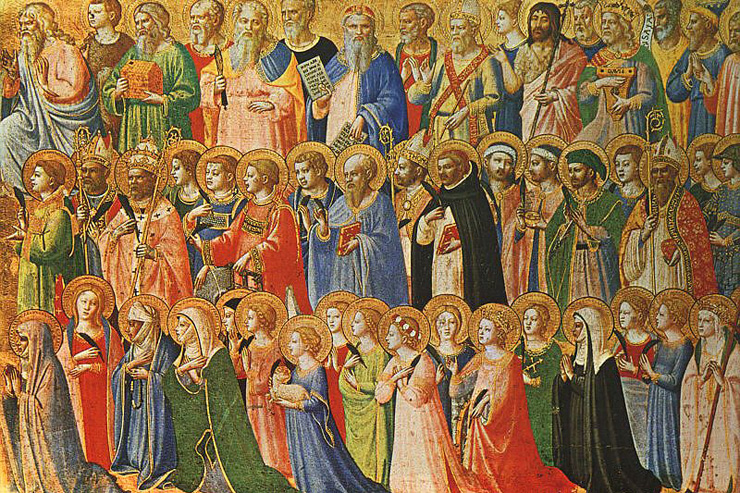
Basilica de Nuestra Señora de los Ángeles
I don’t remember who it was who encouraged me to start talking to my guardian angel. It was certainly after I became Catholic, because prior to that I would have laughed out loud in the face of such a blatant absurdity. The only reason I was open to this idea of talking to my angel was because of a book I had read, clarifying that angels were not, in fact, fat little winged babies.
I started to think of my angel as a peer, though I know they are far above humans in intellect. The challenge was not to elevate an angel higher than God, so I started thinking of my angel walking beside me.
When I heard the old adage (new to me because I had not been raised Catholic) that the angels finish any rosary that’s started, I began to get a picture of a special kind of intimacy with my angel. “Does he know what I’m thinking?” I wondered.
Because I’m of the experiment-for-proof school of living, I decided to test it. I had had some problems setting my alarm for a crazy hour of Adoration, in which I had to get up at 3:30 a.m. to get to church by 4 a.m. Consequently, I had missed some of my time, quiet prayer time that I savored.
I began praying before going to sleep, “God, if you want me to get there, you’re going to have to wake me up, because I just don’t know what to do about this alarm clock!”
Since praying that prayer, or asking my guardian angel, who I had dubbed “G,” directly (usually with a “G, please make sure I’m up!”), I have never missed another hour of Adoration. I go at a different time now, but it still involves a delicate timing balance.
I am often asleep before I have to leave, and the alarms I set are always prone to silly operator error (like forgetting to turn them on). One morning recently, I could have sworn that I heard an actual voice in my head saying, “Sarah, get up.” I joke about having voices in my head, and about naming them, but this was someone else’s voice, a new voice.
I think it was my angel.
Some people maintain that there is no such thing as a coincidence. I’ve heard them called God-incidents, and I’ve always raised my eyebrows.
I must not be the only one who hesitates before not calling something a coincidence. On a footpath near Cartago, Costa Rica, a peasant, Juana Pereira, experienced something she must have thought was just a fluke: as she was gathering firewood on August 2, 1635, the Feast of the Holy Angels, she saw an odd light coming from the trees by the path.
She followed the light and there, tucked into a nook of a larger rock, was a stone statue of the Virgin Mary.
It was close to three inches high and completely black. Mary is carrying Jesus on her left arm, gathered into the folds of her mantle. He’s reaching up, almost as though He’s reaching for her face, and she’s looking down, though not at Him.
Juana took the statue home, probably thinking it a lovely accident that she had found it that day. Though she was poor, I don’t think she considered selling it. Maybe she took it as the sign she needed that day that God was at work in her life, despite her hardships. Perhaps she had plans to take it to her priest. Maybe she was going to enjoy having Mary in her hut.
What do you suppose Juana’s first thought was on finding the statue missing? Did she panic? Had she told anyone about discovering it, and could they have stolen it?
As it turned out, the statue had not disappeared, but had only returned to the rock where it had been found. This happened again, and then Juana took the statue to her parish priest, who put it in the tabernacle of the church.
When the statue was found, not just once more, but four more times, at the original site after disappearing from cupboards and tabernacles and places of safekeeping, someone must have said, “Oh! This isn’t a coincidence!” In fact, it was interpreted as a sign that the Virgin Mary wanted a shrine built on the site she had been found.
The shrine of Our Lady of Angels, or La Negrita, as she is fondly called by the Costa Ricans, became a destination for pilgrims, and especially for those who were poor or outcast, crippled or hurting. In 1926, the image was solemnly crowned, which means it was recognized as holy and worthy of veneration. Then, in 1935, Pope Pius XI elevate the shrine of Our Lady of Angels to a basilica, Basilica de Nuestra Señora de los Angeles, showing the high respect and sacredness of the site and the title of Mary.
The Costa Rican image of Our Lady of Angels is humble. It’s not sparkly and golden, though it’s displayed in a large gold monstrance at the basilica. It’s just a small piece of carved stone, one with an inclination for showing up back where it was found originally. It reminds me that I never know when I’ll get the help I need.
La Negrita, the Black Virgin, didn’t appear to someone rich and learned. As she often does, Mary chose the lowly, someone who could embrace the miracle and bask in its beauty, despite the appearance of coincidence.
In my day-to-day life, covered as I am in rational thinking and left-brained activity, it’s possible to ignore the existence of miracles. I could think of my alarm clock as a cheap piece of plastic and completely ignore the fact that every single time I’ve forgotten to turn it on for that new wake-up time to get to Adoration, I’ve still been up in time. It is, after all, just a coincidence.
Or is it?
Angels are the closest beings to God in heaven, and Mary is the queen of them. The title Our Lady of Angels shows a special fondness for God’s plan, a particular respect for His ordering, a specific veneration for His mother. Instead of Mary with a gown of gold, we have Mary carved in black stone. She’s nothing much to see and she’s smaller than my daughter’s favorite doll.
And yet, within that simple stone statue, there’s the possibility for healing and wholeness. As Mary holds her Son, she looks down to the angels holding her. Can you imagine her passing Him to one of them, so that I could have a closer look? Do you think she would hesitate to share her Baby with anyone who wanted to hold Him? Could there be any better way to find the path to heaven?















